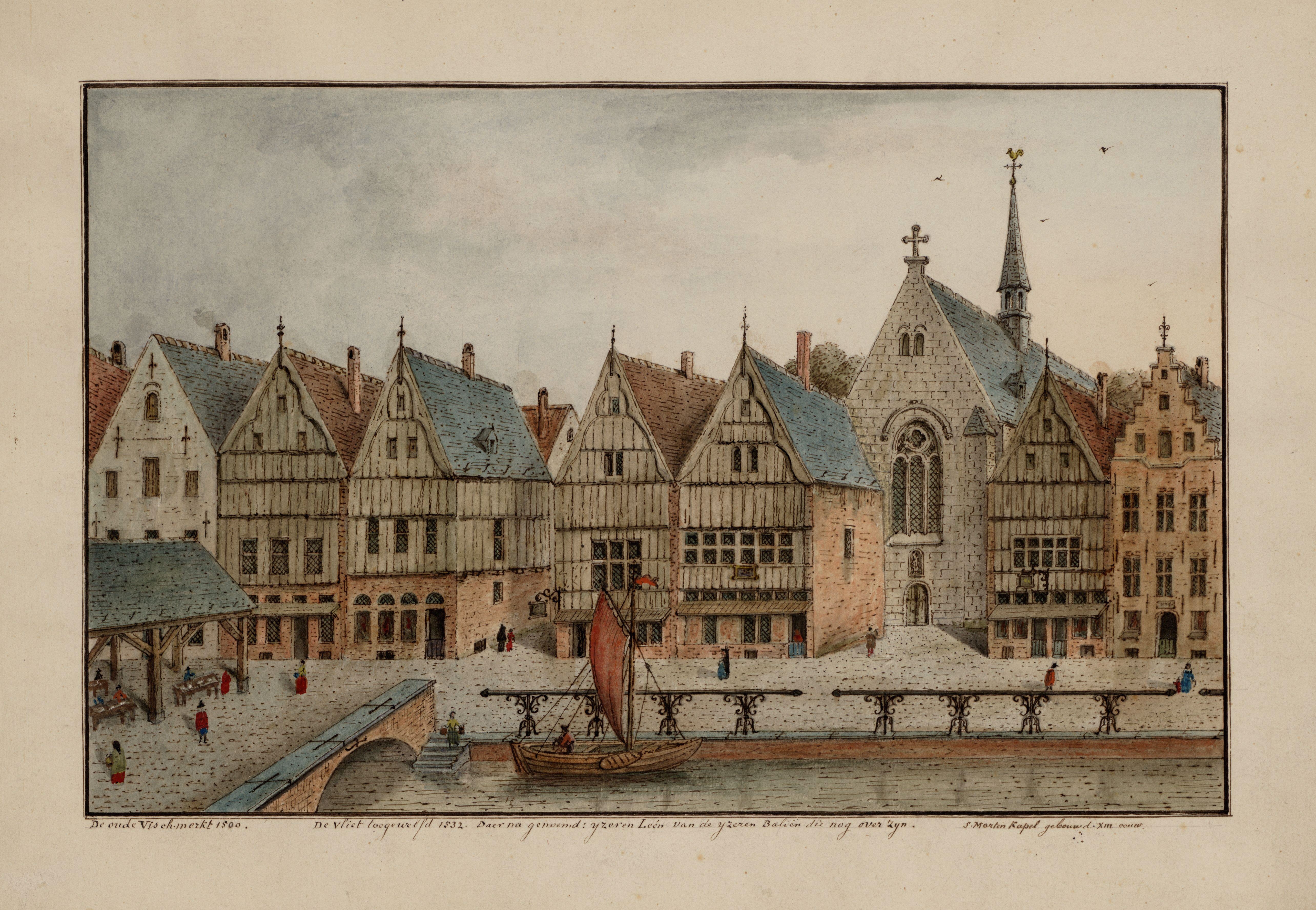
The Vlietenkelder
| Attention: The Vlietenkelder cannot currently be visited due to repair works. |
Visit the Vlietenkelder
First impressions may be deceptive, but since time immemorial Mechelen has been a city of water. Though the River Dyle still meanders through the centre, it is less apparent today that the inner city used to be criss-crossed by streams known as ‘vlieten’, i.e. tributaries of the river. Over the years some, like the Melaan and a part of the Heergracht, have been covered over and others opened up again.
At the beginning of the thirteenth century, a stream was dug on IJzerenleen, connecting the Dyle with the Koolvliet, from the Schepenhuis (Aldermen’s building) to the Botermarkt. It was once the site of the Vismarkt, the fish market. The water was used to clean the fish but also as a dump for the offal. The streams were covered over in three phases as evidenced by the Vlietenkelder, the underground water chamber beneath IJzerenleen, where different types of stone, masonry and arches are found.
During the Second World War, when Mechelen was the target of numerous military attacks, the Vlietenkelder was used as an air-raid shelter. Local residents but also passers-by took shelter in the Vlietenkelder during bombing raids. This space, which is steeped in history, was recently opened as a tourist attraction. Visitors must be accompanied by an authorized city guide.
You can visit the Vlietenkelder on a ‘Tailor-made Walk’. Alternatively, a ‘Water in the Streets’ walk will include either a visit to the Vlietenkelder or to the Sluice House (Spuihuis), depending on availability.

View of the old Vismarkt on the Ijzerenleen, with St Martin's Chapel in the background, 1500.
© Regionale Beeldbank Mechelen